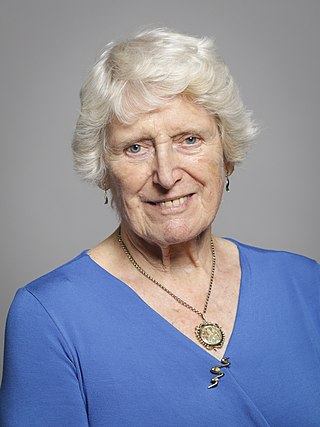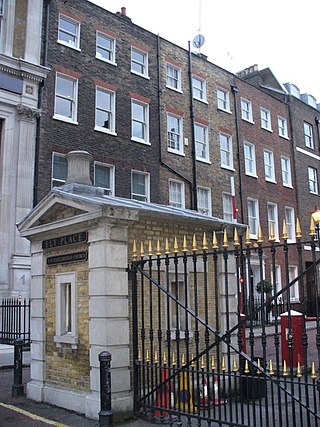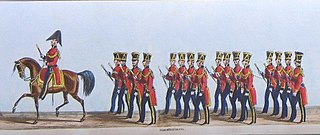Related Research Articles
Inquests in England and Wales are held into sudden or unexplained deaths and also into the circumstances of and discovery of a certain class of valuable artefacts known as "treasure trove". In England and Wales, inquests are the responsibility of a coroner, who operates under the jurisdiction of the Coroners and Justice Act 2009. In some circumstances where an inquest cannot view or hear all the evidence, it may be suspended and a public inquiry held with the consent of the Home Secretary.
Bartholomew de Badlesmere, 1st Baron Badlesmere was an English soldier, diplomat, member of parliament, landowner and nobleman. He was the son and heir of Sir Gunselm de Badlesmere and Joan FitzBernard. He fought in the English army both in France and Scotland during the later years of the reign of Edward I of England and the earlier part of the reign of Edward II of England. He was executed after participating in an unsuccessful rebellion led by Thomas, 2nd Earl of Lancaster.

A coroner is a government or judicial official who is empowered to conduct or order an inquest into the manner or cause of death. The official may also investigate or confirm the identity of an unknown person who has been found dead within the coroner's jurisdiction.

The Lord Steward or Lord Steward of the Household is an official of the Royal Household in England. Holders of the office are always peers, until 1924, were always members of the Government, and until 1782, the office was one of considerable political importance and carried Cabinet rank.

St Thomas' Hospital is a large NHS teaching hospital in Central London, England. It is one of the institutions that compose the King's Health Partners, an academic health science centre. Administratively part of the Guy's and St Thomas' NHS Foundation Trust, together with Guy's Hospital, King's College Hospital, University Hospital Lewisham, and Queen Elizabeth Hospital, it provides the location of the King's College London GKT School of Medical Education.

The Statute of Westminster of 1275, also known as the Statute of Westminster I, codified the existing law in England, into 51 chapters. Only chapter 5 is still in force in the United Kingdom, whilst part of Chapter 1 remains in force in New Zealand. It was repealed in Ireland in 1983.

Ann Elizabeth Oldfield Butler-Sloss, Baroness Butler-Sloss, GBE, PC, is a retired English judge. She was the first female Lord Justice of Appeal and was the highest-ranking female judge in the United Kingdom until 2004, when Baroness Hale was appointed to the House of Lords. Until June 2007, she chaired the inquests into the deaths of Diana, Princess of Wales, and Dodi Fayed. She stood down from that task with effect from that date, and the inquest was conducted by Lord Justice Scott Baker.
Ingram Frizer was an English gentleman and businessman of the late 16th and early 17th centuries who is notable for his reported killing of the playwright Christopher Marlowe in the home of Eleanor Bull on 30 May 1593. He has been described as "a property speculator, a commodity broker, a fixer for gentlemen of good worship" and a confidence trickster gulling "young fools" out of their money.

Ely Place is a gated road of multi-storey terraces at the southern tip of the London Borough of Camden in London, England. It hosts a 1773-rebuilt public house, Ye Olde Mitre, of Tudor origin and is adjacent to Hatton Garden.
Operation Paget was the British Metropolitan Police inquiry established in 2004 to investigate the conspiracy theories about the death of Diana, Princess of Wales in a car crash in Paris in 1997. The inquiry's first report with the findings of the criminal investigation was published in 2006. The inquiry was wound up following the conclusion of the British inquest in 2008, in which a jury delivered its verdict of an "unlawful killing" due to the "gross negligence" of both the driver of Diana's car and the pursuing paparazzi.
An inquest is a judicial inquiry in common law jurisdictions, particularly one held to determine the cause of a person's death. Conducted by a judge, jury, or government official, an inquest may or may not require an autopsy carried out by a coroner or medical examiner. Generally, inquests are conducted only when deaths are sudden or unexplained. An inquest may be called at the behest of a coroner, judge, prosecutor, or, in some jurisdictions, upon a formal request from the public. A coroner's jury may be convened to assist in this type of proceeding. Inquest can also mean such a jury and the result of such an investigation. In general usage, inquest is also used to mean any investigation or inquiry.

The Marshalsea (1373–1842) was a notorious prison in Southwark, just south of the River Thames. Although it housed a variety of prisoners—including men accused of crimes at sea and political figures charged with sedition—it became known, in particular, for its incarceration of the poorest of London's debtors. Over half of England's prisoners in the 18th century were in jail because of debt.

The Knight Marshal is a former office in the British Royal Household established by King Henry III in 1236. The position later became a Deputy to the Earl Marshal from the reign of King Henry VIII until the office was abolished in 1846.

The Coroners and Justice Act 2009 is an Act of the Parliament of the United Kingdom. It changed the law on coroners and criminal justice in England and Wales.
Paul Knapman DL was Her Majesty's coroner for Westminster, from 1980 to 2011. His responsibility for investigating sudden deaths as an independent judicial officer saw him preside over numerous notable cases.
William Danby was a sixteenth-century lawyer and Coroner of the Queen's Household towards the end of the reign of Queen Elizabeth I. He is particularly noted for having presided over the inquest into the controversial death at Deptford in 1593 of the poet/dramatist Christopher Marlowe.
The Royal Households of the United Kingdom consist of royal officials and the supporting staff of the British royal family, as well as the Royal Household which supports the Sovereign. Each member of the Royal Family who undertakes public duties has their own separate household.
A coroner in the U.S. state of Washington is a quasi-judicial, public official principally charged with the certification of human death. It is completely identical in authority to the parallel office of medical examiner, which also exists in the state. Washington uses a "mixed system" of death investigation with some counties employing coroners, and some employing medical examiners.

The Kew Mortuary or Dead-House is a small, shed-like building, approximately 3.75 by 2.25 metres and 2.8 metres high, attached to the back of Caxton House, 110 Kew Green, just to the east of Kew Bridge on Greyhound Lane facing Westerley Ware. This Victorian mortuary building retains an original slate slab.
The verge was an area of 12-mile (19 km) radius around the court of the monarch of England, and later Britain, that was subject to special legal jurisdiction in some aspects. A Court of the Verge heard legal cases arising from within the verge or pertaining to members of the Royal Household. The Coroner of the Household held jurisdiction for the investigation of deaths within the verge. The Clerk of the Market held powers over markets held within the verge. The Board of Green Cloth originally issued arrest warrants within the verge but later developed a role as a licensing authority.
References
- Anonymous (1812). An Essay Towards an History of the Ancient Jurisdiction of Marshalsea of the King's House. London: W. Clarke & sons. Retrieved 1 April 2012.
- Anonymous (1756). The Coroner's guide, or, The office and duty of a coroner. London: John Worrall.
- Coke, Sir Edward (1777). The reports of Sir Edward Coke, Knt. (1572–1617) Vol.IV. London: J. Rivington. pp. 45–47. Retrieved 1 April 2012.
- Gross, Charles (1896). Select Cases from the Coroners' Rolls, A.D. 1265–1413, with a brief account of the history of the office of coroner. London: The Selden Society . Retrieved 1 April 2012.
- Hotson, Leslie (1925). The Death of Christopher Marlowe. New York: Haskell House.
- Hunnisett, R.F. (1961). The Medieval Coroner. Cambridge: The University Press.
- Nichols, Francis Morgan (1901). Britton: An English Translation and Notes. Washington, D.C.: John Byrne & Co. Retrieved 1 April 2012.
- Sewell, Richard Clarke (1843). A Treatise on the Law of Coroner. London: Owen Richards. Retrieved 1 April 2012.
- Wellington, Richard Henslowe (1905). The King's Coroner. Great Britain.
{{cite book}}: CS1 maint: location missing publisher (link)